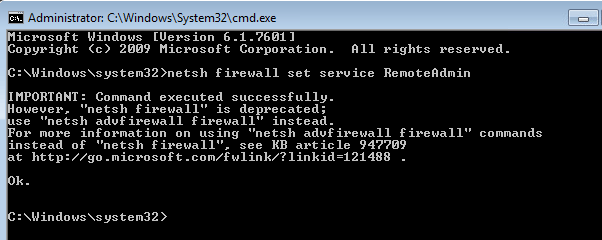

If the response is "FILTERED", then a firewall or VLAN could be blocking the port. Run port query to check if the remote machine ip:port is listening.If the remote machine IP is mapped to the range (10.*.*.*, 172.16->31.*.*, 192.168.*.*) and the Collector machine is not in the same private network then the remote machine will not be accessible.The firewall is properly configured on the remote machine.On older Windows systems, the default dynamic port range is 1025-5000. On Windows Vista and 2008+, the default dynamic port range is 49152-65535. Validating Dynamic RPC Port Access Through Firewalls You can also change the owner back to Trustedinstaller afterwards. If you can directly grant Administrators full control via GPO, you can skip this step. The reason that the key's owner is changed from Trustedinstaller to Administrators is so that Sumo Logic can grant Administrators full control. These registry key changes are necessary because Sumo Logic leverages Jinterop, a Java-DCOM bridge, to communicate with the remote machine and gather perf logs via WMI through DCOM. Several major software vendors have documented a requirement to make a similar change in order to allow script access. Find the following registry key: HKEY_CLASSES_ROOT\CLSIDġ1. Give the rule a name, for example, "Allow Sumo Logic Collector IN".Ģ. AWS AMIs consider their LAN interfaces to be on a public network by default.ġ2.

In the following screenshot, it's set to Any IP address.įor Amazon users, Windows AMIs not in a domain should tick "Public". The remote address should be the IP address the collect will use to talk to this Windows system. The local address should be the network address the Collector will connect to. Enter the IP restrictions (optional, but more secure). Go to Firewall > Advanced settings > Inbound Rules > New Rule, on the popup window.ĥ.


 0 kommentar(er)
0 kommentar(er)
